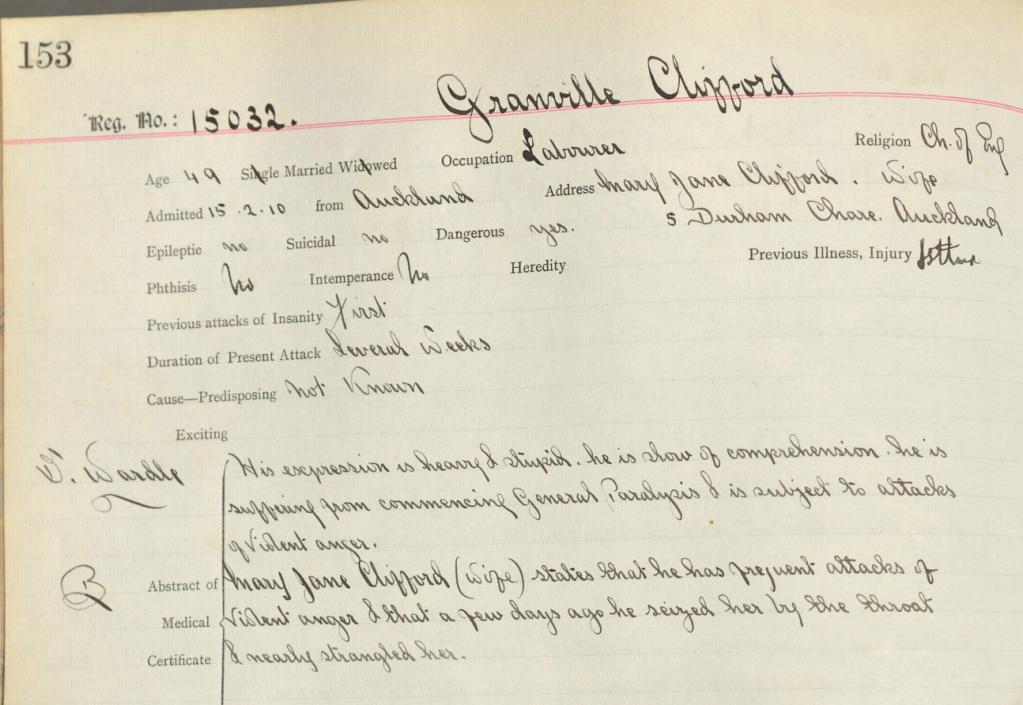Back to my mother’s side of the family again this time and I wanted to focus on the experience of a woman as so much of the information I have found during my family history research is about the men. The woman in question is Mary Jane Clifford, née Ballantyne (1870-1952), my maternal grandmother’s grandmother, who was widowed in a very distressing way but got through with the help of her family.
Mary Jane Ballantyne was born on 22 June 1870 in the Scottish border town of Langholm, in Dumfriesshire[1]. The second child of John and Janet Ballantyne, her father was a skilled tailor in the booming textile industry[2]. The family moved across the border to England when Mary was 4 or 5 and by 1881 she was one of 6 children at their home on Edward Street in Bishop Auckland, Durham[3]. Her parents went on to have 6 more children, an example which Mary would later follow with a large family of her own.
Her first child was a daughter, Nellie, born in 1890 when Mary was 19 and unmarried[4]. She was followed 3 years later by another daughter, Jessie[5], before Mary married Granville Clifford, a brickworks labourer, when she was 26[6]. They lived together initially on Edward Street, just down the road from the Ballantyne family[7], and later moved to a slightly larger property on Durham Chare, a steep and narrow road leading down to the river[8].

Mary had seven children with Granville over the next 14 years and her life would likely have been one of domestic drudgery as her husband was out working and she cooked, cleaned and cared for all the little ones. At least her parents and many brothers and sisters were close by to help out and provide some escape. One can imagine the relief as each child reached 5 years of age and was required to start school, or maybe Mary would have preferred them to go to work and bring in some much needed extra money for the family.
By February 1910, at the age of 39, Mary was giving birth to her 10th and final child[9]. But her husband’s behaviour was becoming erratic and sometimes violent. Within a few weeks, Granville’s mental state deteriorated rapidly and his anger worsened, at one point seizing Mary by the throat and nearly strangling her[10]. She must have been terrified and confused by this sudden change and desperate to protect herself, her new-born baby and her older children. She must also have feared for Granville and the family’s future as she admitted him to the Durham County Asylum in nearby Sedgefield for treatment, his expression dull and his tongue stuck out and quivering[11]. She must have known that his diagnosis meant it was highly unlikely that Granville would recover.

Mary was left at home in the small cottage in Bishop Auckland with 8 children to look after, and must have struggled through the following days and weeks, keeping her family together by day and lying alone with worry at night. When their father passed away 8 months later[12], Mary told the children that he had died in a railway accident[13]. Did she really believe his illness had been caused by a blow to the head at work or was she covering the embarrassing truth that he had succumbed to “general paralysis”, a condition that had recently been linked to untreated syphilis?
Times got harder for Mary in the years that followed, and she initially made ends meet by doing laundry work from home while her daughter Jessie earned money as a machinist in the local lithographic works[14]. Despite her diminutive size – she was under five foot and wore a size 2 shoe – Mary showed great strength and resilience to survive as a single working parent and she later found work cleaning the local newspaper offices and theatres, with help from her daughter Beth[15]. In 1921, Mary’s house was home to 8 other family members, some working and some helping at home, so although life was a struggle and they were all crammed in to only 3 or 4 bedrooms, she was always surrounded by loved ones[16].
As her children started families of their own and finally all left home, Mary lived out her days in ‘Bishop’ and enjoyed Scottish dancing and month-long visits from her grandchildren in the summer holidays[17].
She died aged 82 on 27 Nov 1952 from liver cancer[18], leaving behind 9 children and at least 11 grandchildren. Mary’s life was turned upside down by her husband’s sudden and shocking demise, but her spirit was undimmed and she never stopped dancing.

References
[1] Scotland, Select Births and Baptisms, 1564-1950, Ancestry.co.uk
[2] 1871 Scotland census
[3] 1881 census of England & Wales
[4] 1901 census of England & Wales
[5] ibid.
[6] England & Wales Marriage index
[7] 1901 census of England & Wales
[8] 1911 census of England & Wales
[9] ibid.
[10] Winterton hospital casebooks, admission number 15032
[11] ibid.
[12] Death certificate of Granville Clifford
[13] Recording of conversation with Mary Pearson, 2010
[14] 1911 census of England & Wales
[15] Recording of conversation with Mary Pearson, 2010
[16] 1921 census of England & Wales
[17] Recording of conversation with Mary Pearson, 2010
[18] Death register entry for Mary Jane Clifford